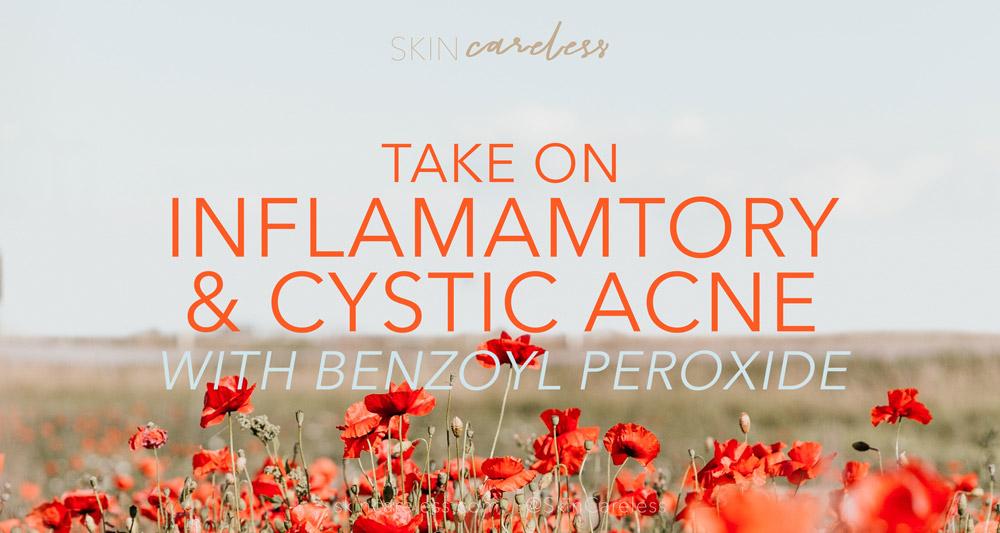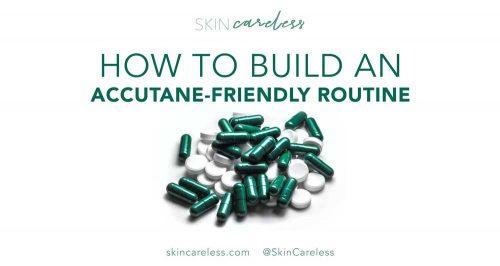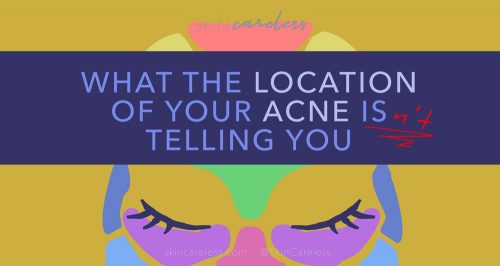Ever had that really nasty, deep kind of acne? The kind that you could feel growing and practically see from a mile away?
Inflammatory acne like papules, pustules and cysts aren’t glamorous or fun. They are painful and can leave serious scarring behind once they’re gone.
Unlikely non-inflammatory acne, which is extremely common and can sometimes crop up from things like a les-than-perfect hygiene routine, more severe inflammatory acne often has a genetic component.
Once you’ve determined that you’re dealing with inflammatory acne (read this article to find out how), it’s time to get started on reducing those pimples as fast as possible.
Today I’m going to help you out by sharing the single most effective, affordable and accessible ingredient to fight inflammatory acne fast.
Before we start: What NOT to do with cystic acne
But first, let’s talk about one way to definitely not flatten your inflamed acne overnight – picking at your skin. Not only is it a super damaging habit that’s hard to break (believe me), but in this case it won’t give you the results you’re looking for.
Inflammatory and cystic acne is defined by a swelling response in the skin. Most of what you see creating the acne bump isn’t the blockage itself but rather the skin’s reaction to it. You can’t squeeze out the offending blackhead this time. Applying more trauma to inflammatory acne will only make the problem worse by aggravating the sensitive tissues. Not to mention the risk of spreading the infection further. Just don’t do it!
Benzoyl peroxide for inflammatory acne
Benzoyl peroxide is an antiseptic medication (found commonly under the names Benzac, Clearasil and PanOxyl) that is used in a range of forms and concentrations from 2.5% to 10% and higher to treat acne.
How does benzoyl peroxide work?
Benzoyl peroxide works to treat inflammatory acne in several ways. Firstly, it reduces oil production in the skin, meaning less food for those pesky acne bacteria to much on. Secondly, it breaks down the keratin (dead skin) that’s trapped in each pore to free the blockage that has usually triggered each breakout. Thirdly, it can actually attack the acne bacteria themselves by a process called peroxidation. That means it steals their electrons, ‘oxidising’ and weakening and killing them in much the same way as the free radicals I’m always going on about. This treats the infection at the root. And unlike antibiotic treatment, there’s no chance of building a resistance. Finally, it has anti-inflammatory capabilities, helping to reduce the swelling and truly flatten cystic acne fast.
Benzoyl peroxide is the most effective way to quickly get your skin back on track to being clear again.
What percentage should I buy?
Benzoyl peroxide’s oil-drying capabilities are a double-edged sword. As benzoyl peroxide can sometimes be overly drying, leading to irritation, it’s recommended to use the lowest concentration that is effective for you. For many people, a formula with a concentration of 5% or 10% has actually been shown to be no more effective than a 2.5% formula. More is not more in this case! Get yourself a 2.5% benzoyl peroxide product as it gives the same results with less irritation.
Warning: will bleach your clothes and hair!
Thanks to the same mechanism that lets it kill acne bacteria, benzoyl peroxide will quickly and severely bleach clothes and hair, so only use it with white sheets and towels, and do not apply to the eyebrows or hairline. Be careful while it’s wet – once it’s dry, it won’t cause any problems.
To solve these bleaching issues and reduce the risk of irritation even further, some people recommend ‘contact therapy’. Contact therapy involves applying your benzoyl peroxide product for 5-10 minutes, then completely washing it off. Your skin will absorb a surprising amount in this time. This method actually offers almost identical acne-fighting capabilities as leaving the product on, only with less irritation and a reduced chance of accidental linen bleaching.
Try some of these benzoyl peroxide based products
For something super affordable for the size and with no irritating filler ingredients, try Acne.org 2.5% Benzoyl Peroxide Treatment.
If you’re looking for an all-rounder product with lots of great ingredients, reach for Paula’s Choice CLEAR Acne Treatment Regular Strength with 2.5% Benzoyl Peroxide.
Benzoyl peroxide can of course be combined with the best ingredient for non-inflammatory acne, salicylic acid, as they’re both super effective and together you’ll get even better results. Paula’s Choice CLEAR Regular Strength Acne Travel Kit with 2% Salicylic Acid & 2.5% Benzoyl Peroxide is a great way to try out these two ingredients at once.
Have you ever tried benzoyl peroxide? Did your towels survive it?






I have cystic acne and it has been the biggest pain for YEARS! Used tea tree oil and everything else on the planet and nothing. Dermalmd acne serum has made a drastic difference.
[…] my favourite actives include Salicylic Acid or Niacinamide + Zinc for milder, congestive acne, Benzoyl Peroxide for more severe inflammatory acne, Mandelic Acid for texture and Vitamin C for […]
[…] real product suggestions to combat your acne, check out my posts about inflammatory and non-inflammatory acne […]
[…] is the gold-standard go-to treatment for moderate acne. And in a gel formula like it’s totally compatible with a water-based routine. Though there are […]
[…] to help acne, rather than the options that are. Instead, you should be focusing on salicylic acid, benzoyl peroxide, and other proven […]
[…] better when used in a leave-on formula. My first routine was packed full of salicylic acid and benzoyl peroxide. They’re great ingredients when used correctly, but in a cleanser they just dried my skin out. […]
[…] that comes with whiteheads. That’s what makes it a great choice to deal with the more serious inflammatory acne […]